 Delhi
Delhi8 Riveting Reasons Everyone Visit The Lotus Temple, Also Known As Delhi's Undisputed Cultural Gem!
India has long embraced diversity like an expansive ocean, where every faith, belief, and culture converges harmoniously. The Lotus Temple stands as a testament to this inclusive spirit, inviting all to discover its magnificence. Join us as we unravel the charm of this iconic city attraction – all the while giving you 8 reasons why you musty visit the Lotus Temple in Delhi.
1. Built By What's Touted To Be The Youngest Religion In The World
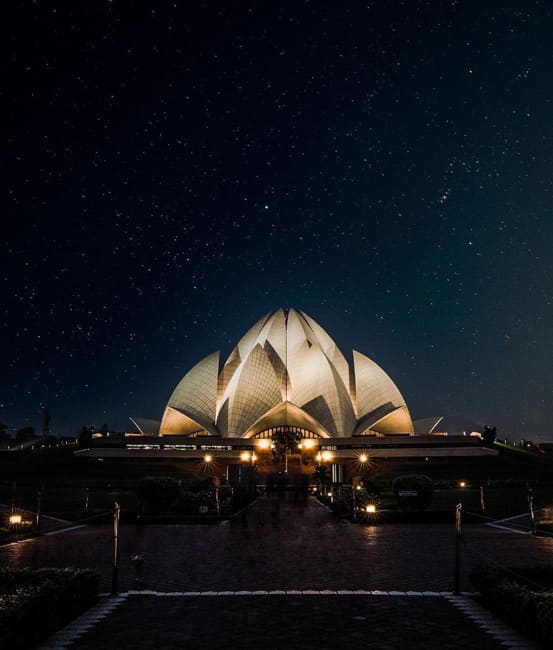
Picture Credits: iamshobhit
The youngest religion in the world built a temple of their faith to become a prominent landmark in the capital of a country which still practices the oldest religion in the world. This lotus-shaped temple which was dedicated in December 1986, is the designation of a place of worship, or temple, of the Bahá'í Faith. The Baha’i faith founded by Bahá'u'lláh in mid-18th century Iran, claims to follow a lineage dating back to Abraham, Buddha, Christ and Mohammed and professes the unity and oneness of mankind.
2. One Of Only 7 Bahá’í Houses Of Worship In The World
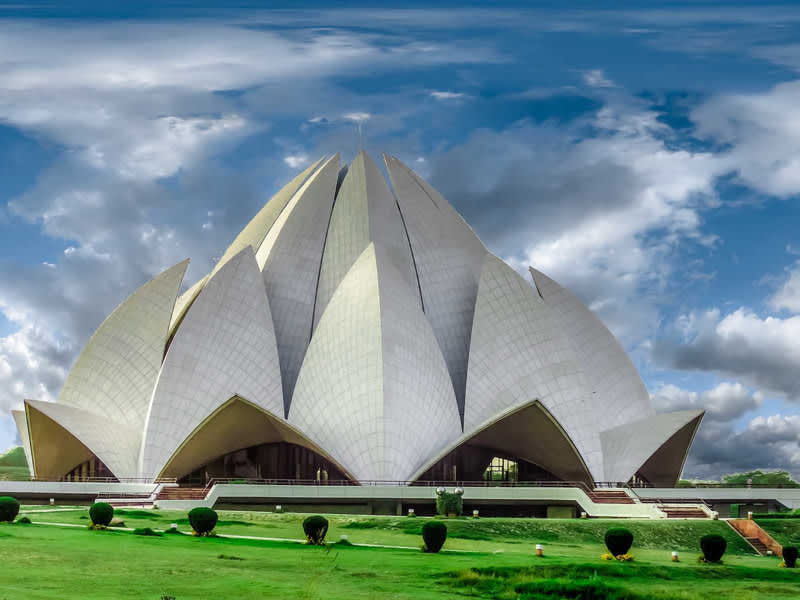
The number of Bahá’í Houses of Worship in the world is scarce but each boasts of an unparalleled beauty and the Lotus Temple in the Indian subcontinent is among seven Bahá’í Houses of Worship around the world. The others are located in Sydney (Australia), Panama City (Panama), Apia (West Samoa), Kampala (Uganda), Frankfurt (Germany), and Willamette (USA). Each of these Houses of Worship, while sharing some basic design concepts, have its own distinct cultural identity, but still, embodies the principle of unity in diversity.
3. It's An Incredible Modern Architectural Marvel Of The Country
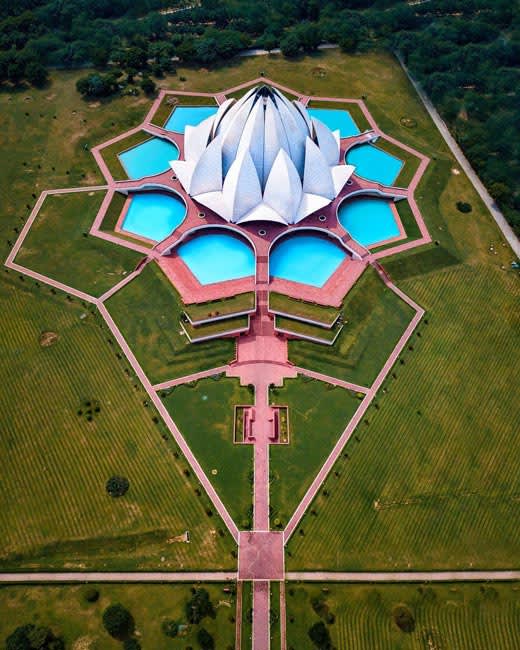
Picture Credits: /i.satyam5
Designed by Iranian architect Fariborz Sahba, the temple’s architecture was conceived and constructed in the shape of a lotus, in keeping with the significance of this flower in the spiritual spheres of both Hinduism and Buddhism in India. The lotus is the ultimate symbol of breaking free from the chains of bondage, yet remaining in the world, much like the flower growing out of mud, and yet remaining above it. This design was very appropriate and unique because, before it, no other temple or place of worship had ever been constructed like this. Using a combination of dolomite, marble, cement and sand, the 27 petals of the structure in white were constructed to resemble a lotus in full bloom. There are nine ponds surrounding the structure, each reflecting the temple in the shape of leaves surrounding the lotus flower, making it a truly breathtaking sight.
4. The First Temple In Delhi To Make Use Of Solar Panels
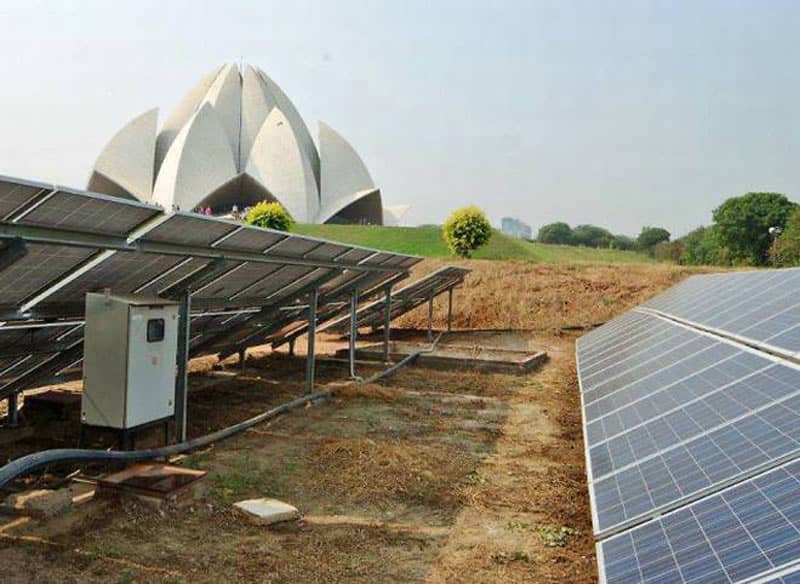
Picture Credits: thehindu
The Lotus Temple on average consumes around 500 KW of electricity of which 120 KW is provided by solar power generated by solar panels on the building, making it the first temple in Delhi to tap into a renewable source of energy. This saves the temple around Rs 1,20,000 per month. This also makes it the first major public site in Delhi to have installed a ‘net metre’!
5. The Central Hall Of The Temple Can Seat 2,500 People At A Time
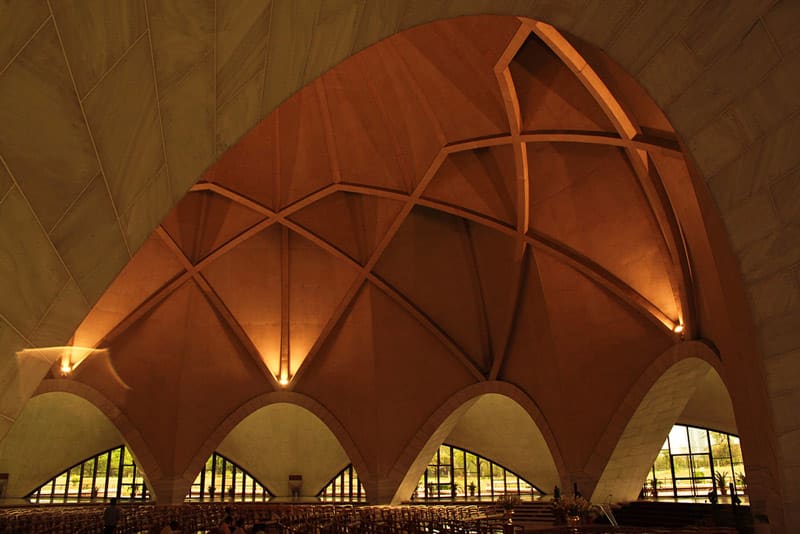
The temple sees a footfall of at least 10,000 people on a daily basis but you’ll never find the place crowded owing to the gigantic peaceful interiors of the main hall. There are nine doors that lead into the main prayer hall and all you’ll find inside are rows and rows of chairs that can seat around 2,500 people for them to sit at and pray in earnest.
6. The Temple Has No Idols, Photographs Of Deities Or Altars
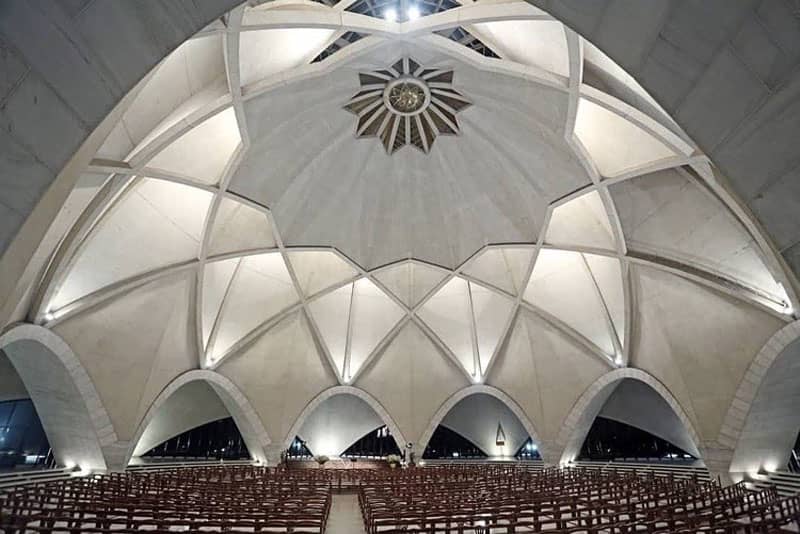
Picture Credits: lakshay_photographer
Before stepping into the temple, all footwear must be removed, like any other place of worship in India, be it a Hindu temple, Gurdwara or mosque. The interiors are unexpectedly a sort of an anti-climax, considering what one expects from the stunning exterior façade of the temple and there is nothing inside, no altar, idol, symbols or religious artefacts to indicate that it is a house of worship. Only rows upon rows of seats, like a church seating arrangement for visitors or worshippers to quietly contemplate and meditate. The temple is open to all to visit, regardless of their religion, gender, nationality or any other qualification, thereby professing the unity of mankind.
7. A Place Where You Can Meditate In Peace & Tranquility
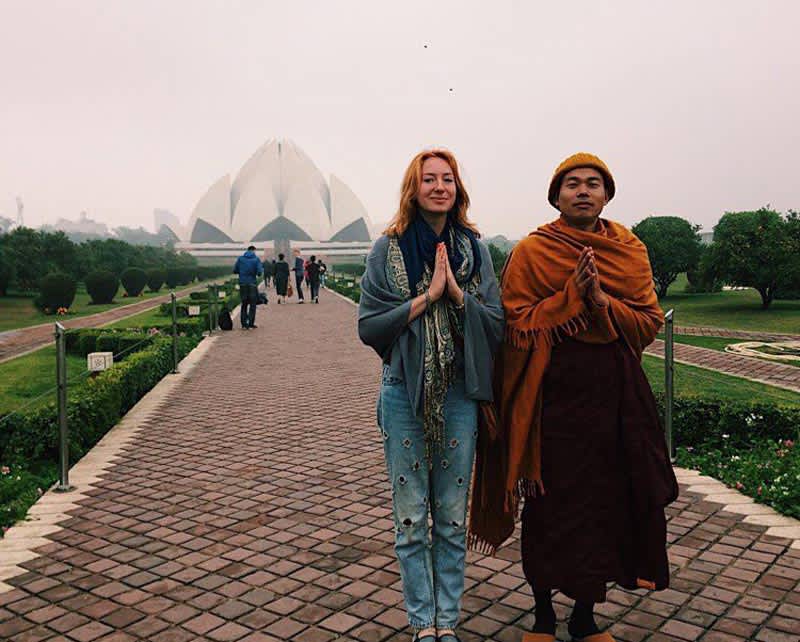
Picture Credits: rubinovich
Unlike the usual buzz of people whispering in quiet tones in a tourist spot, or the sound of camera shutters clicking, the silence inside seems to seep into the very soul of the visitor, making some very relaxed, and others a little edgy. The volunteers quickly and quietly hand out Baha’i literature which contains text in all languages and disappear as quickly, leaving one to soak in the atmosphere. Entry is free for all and the temple remains closed on Mondays.
The peace and stillness felt inside the temple hall are like a weight being lifted from the shoulders and time seems to stand still, until the spell is broken and it’s time to get back to the madness of the real world.
8. Surrounded By Sprawling Lush Gardens

Picture Credits: gethewale
The beauty of the temple is breathtaking and stops one to admire the white purity in silence for a few minutes before heading inside. The temple stands in the midst of emerald greenery with undulating landscaped gardens with manicured lawns and flower beds, adding a serene and pristine touch to the entire scene. You can bring along picnic baskets and relax here as you soak in the sunlight.
So, come and drop by sometime for some soul-saving peace and calm.
Where | Lotus Temple - Lotus Temple Road, Bahapur, Shambhu Dayal Bagh, Kalkaji
Timings | 8:30 AM - 5 PM
Entry | Free
Here’s Their Website | https://bahaihouseofworship.in/
Check Out Their FB Page | https://www.facebook.com/indiabahaihouseofworship/
Skim Through Their Instagram | https://www.instagram.com/bahailotustemple/?hl=en
Like
Bookmark
Share

